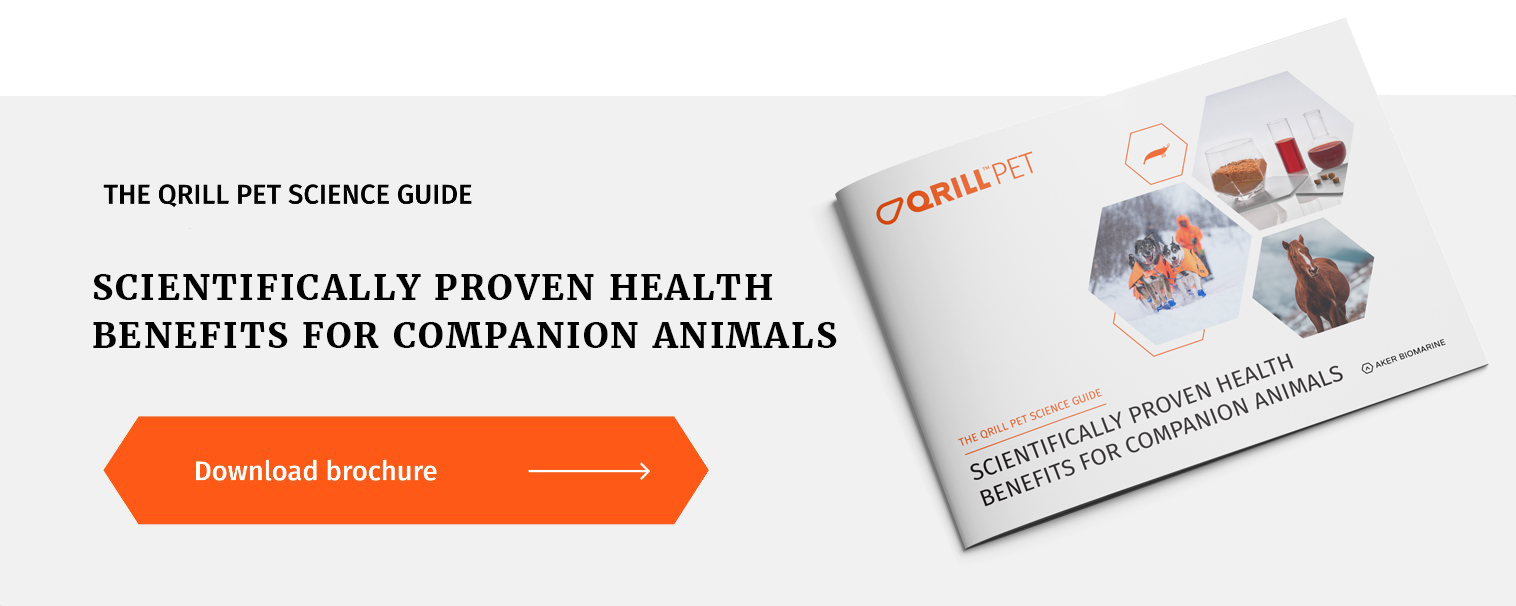We all want to offer our pets a well-balanced diet, that provides them with all essential nutrients that are vital for their health, development and overall well-being.
All nutrients play an important role, as they balance each other and can only provide the right effect if they work in synergy. We could, for example, compare this to a mechanical watch, where even the smallest defect on one of the wheels could affect the overall functionality of the watch.
Nutrients are divided into two groups – those who give energy and those who do not.
Let's have a closer look at these two groups.
Group 1: The energy group
Fats are a vital part of every pet food formulation and should contain a healthy balance between omega-3s and omega-6s. They are a source of mainly energy, however also provide taste to the food. They also facilitate absorption of certain vitamins.
Omega-3s play a very important role in pet food, as dogs and cats are unable to produce them naturally and rely on their diet to maintain healthy levels in the body. Omega-3s help maintain the health of numerous vital organs, including the heart, kidneys, liver, joints, brain, eyes, skin and coat.
Read more about the benefits of omega-3s
Proteins are needed for growth and maintenance of muscles and cells and therefore are a vital component of pet's diets. Did you know that proteins can be found in all cells in the body? Proteins can come from various sources and dog owners have to make the right choice for their pets, depending on age, tolerance and health. Proteins also add to the palatability of the food. Marine protein sources are often used, since they also contain health promoting omega-3s.
Carbohydrates are a major source of energy and part of most pet food formulations. When we look at commercial pet foods, the most common forms of carbohydrates are wheat, corn, rice, barley or oats. Once processed, they are easy to digest for a majority of pets. However, carbohydrates can also come from other diverse sources, such as fruits or vegetable, which provide a higher fiber content.

Group 2: The non-energy group
Vitamins are nutrients that we all know well. Just as for humans, they are an essential health source for cats and dogs. Vitamins are also divided into two groups, fat-soluble and water-soluble. Fat-soluble vitamins are stored in the body, and will come to action when needed.
Water-soluble vitamins must be maintained through right food choices. Each vitamin plays a different role and they can be found in a range of common ingredients. If your pet is not getting enough vitamins through their regular diet, an additional vitamin supplement might be the right choice for them.
Minerals are vital for securing good health and there are more than 100 known minerals available. As pets can’t produce minerals within their bodies, they must obtain them through their diet. Minerals are what remain as ash when plants or animal tissues are burned. For this reason, minerals are usually declared as ash under the ingredient list of pet food.
Minerals provide structural and functional support for the body and are important and involved in most processes. As for all nutrients, mineral balance is key to obtain the best effect, as one mineral needs another to work, and others compete with each other. Minerals are also divided into two groups, macro and micro, which reflects the amount of minerals our pets need in their diet.
Water is a source of life and very important for maintaining your pet’s health and keeping them hydrated. Even dry pet food should contain some water. However, access to a separate source of clean and sufficient water is necessary for every pet. It helps to eliminate waste from the body, balances body temperature, aids digestions and helps to transport important nutrients through the body. Keeping an eye on your pet’s water consumption is recommended, if your pet is not drinking enough. (source)

